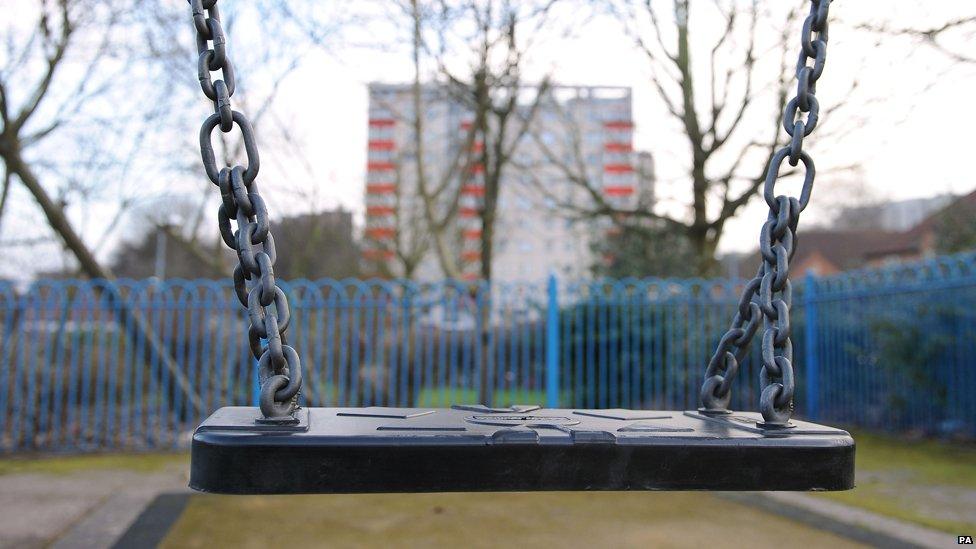Is welfare reform working?
- Published
- comments

The "experts" are scratching their heads. Today was the day, we were told, when we'd see a sharp rise in poverty as official figures included the full impact of welfare cuts for the first time.
But, instead, the numbers have remained broadly flat, external and the government is able to claim that "the proportion of individuals with low income is now at the lowest level since the mid-1980s".
Lobbyists and economic forecasters have been hurriedly rewriting their press releases. The Institute for Fiscal Studies (IFS), which checks the numbers for the government, had forecast a rise. Today they conceded the lack of an increase might "come as a surprise" and would be analysing the data.
"It's good news for people on low incomes that the benefits freeze has not yet pushed more people into poverty," the Joseph Rowntree Foundation conceded, while arguing that "thirteen million people in poverty is still too many in the world's seventh richest country".
The Child Poverty Action Group said the figures still made grim reading. "Make no mistake, we are facing a child poverty crisis in the years ahead," it said. But one cannot help but think their statement would have been rather different if the expected rise had come to pass.
So what is going on? Is it time to ask if welfare reform is working?
It would be foolish to claim any kind of success on the basis of one set of figures. There are still 2.3 million children in poverty in the UK and the government looks increasingly unlikely to meet its targets to get poverty down. The next set of numbers, of course, might tell a different story.
But ministers claim that the welfare reforms, far from pushing people into poverty, are helping them escape it by encouraging them into work.
The number of workless households is at a record low and the proportion of lone parents in work is at a record high of over 63%.

Welfare-to-work policies are based on an American model
It won't have been easy for many, but the offer of working tax credits if you are employed for more than 16 hours a week has encouraged tens of thousands of lone parents into jobs. That is what welfare-to-work policy is all about.
"Work is the best route out of poverty," the Prime Minister has said. But David Cameron is not the first PM to make such a claim. Tony Blair used those exact same words in the late 90s as his government introduced the "New Deal" and promised to bring the "workless class back into society and into useful work".
Indeed, New Labour described itself as the "welfare-to-work government", having taken its cue from Bill Clinton who introduced radical reform of the US benefits system. The American model, originally championed by Republicans, saw welfare switch from being an entitlement to a time-limited benefit that would disappear if the recipient didn't get a job.
It was highly controversial - three members of the department of health and human services resigned. One said the legislation would destroy the welfare safety net, increase poverty and create widespread homelessness. Many predicted disaster for the most vulnerable in America.
But disaster didn't come. US welfare and poverty rates fell during the late 1990s, leading many commentators to declare the approach a success. There are still arguments about the legacy of America's welfare-to-work policy, but the approach was enthusiastically embraced by both Labour and Conservative politicians in Britain worried about a rising benefits bill.
The challenge for government is to make changes that encourage people off benefits and into jobs but without tipping them over into deprivation and hopelessness. It is a balancing act made more precarious if the economy is struggling. Clinton's reforms were introduced against a background of increasing prosperity rather than post-recession austerity.
That's why today's poverty figures were seen as so important - they offer evidence on whether the benefit reforms, represented fully in the data for the first time, are encouraging people up or pushing them down.
Politicians of all stripes will agree that child poverty rates in Britain remain too high. But today's statistics do not provide much ammunition to those who claim the welfare strategy is the problem rather than the solution.